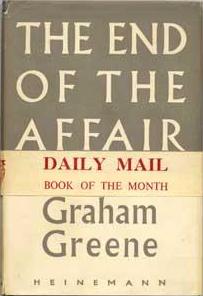Three Gorges Dam: On Culture and Forgetting
In 1998, while working in Beijing, I became fascinated by the Three Gorges Dam, a massive project to dam up Asia’s longest river. Envisioned by Sun Yat-Sen in 1919 as a symbol of Chinese power and finally completed nearly a century later, the dam that was heralded by the Chinese government not only as a major source of hydraulic power but also as as an unmatched feat of engineering. Yet the dam promised from the beginning be an environmental and cultural disaster on a nearly unheard-of scale. My research on the subject, along with a thought-provoking encounter with a Chinese geologist on a bus bound for Xian in the summer of my 28th year, inspired my first novel, Dream of the Blue Room. Published in 2003 and set against the backdrop of the Yangtze River during the dam’s construction, the novel centers not only on the narrator’s personal story, but also on the larger story of the dam and the massive erasure of personal and national narratives brought about by the flooding of hundreds of ancient cities. As the narrator travels down the river, she witnesses cities being abandoned, ancient structures giving way to the rising waters of the Yangtze.
At the time my novel was published, the dam had yet to be completed. Criticizing the dam was still unwise for Chinese citizens, who could face severe repercussions for speaking up about a project that had such widespread government support. But as early as 2007,the government run Xinhua News Agency reported that, if problems weren’t corrected, the dam could lead to environmental catastrophe. And this week, The Washington Post reports that the Chinese government is finally admitting its mistakes, as droughts and other disasters are now being blamed on the dam.
As the crisis has worsened in recent weeks, the spotlight has returned to the dam, releasing a torrent of pent-up blame on the project, not only for the drought but also for recent earthquakes, pollution and the hardship faced by the 1.4 million residents who have been relocated for its construction… As a result, in the past two weeks, the government has made rare admissions of mistakes with the project. The most dramatic came last month when the State Council, led by Premier Wen Jiabao, acknowledged “urgent problems,” in a statement intended to counter mounting public anger.
Novels are as much a record of the times we live in as they are a reflection of the author’s experiences in, and fears about, the world, an expression of the writer’s obsessions. Dream of the Blue Room was my first book-length foray into the subject of memory. A massive inundation of water, one of nature’s most powerful forces, threatens to destroy a nation’s collective memory. The Three Gorges as they appear in my novel no longer exist. Many of the towns mentioned in the book are now buried beneath a massive, stagnant lake, their inhabitants eking out an existence far away from the homes where their families lived for generations. The dam threatens the loss of memory on a massive scale. But it may also be the starting point of a new kind of oral history. When the physical things that define us are gone, what are we left with but story? Stories, after all, do not live in things. They live in the words we pass down from one generation to the next. This is not to say that a loss of place by human folly is acceptable, or justifiable. But erasure, sadly, is in our nature, as is the hubris that precedes it.
 According to an article by Roger L. Clem and Richard L. Huganir published recently in
According to an article by Roger L. Clem and Richard L. Huganir published recently in  During this time, I had lunch in North Beach with a writer friend and teaching colleague–Juvenal Acosta. We got to talking about our favorite books. Juvenal had high praise for Graham Green’s
During this time, I had lunch in North Beach with a writer friend and teaching colleague–Juvenal Acosta. We got to talking about our favorite books. Juvenal had high praise for Graham Green’s